
Sodium-iodate is a retinotoxin that reliably causes damage to the RPE by oxidative stress, resulting in a cascade of photoreceptor apoptosis. This dry AMD research model causes full disease onset by 14 days.
Sodium-Iodate Injection
Sodium-iodate is administered systemically by tail vein and causes full disease onset 14 days after systemic exposure.
Treatment Routes
Localized treatment routes can include topical, intravitreal, subretinal, intracameral, and suprachoroidal. Systemic treatment routes are also available.
Endpoint Frequency
Clinical endpoints can be collected up to once per week.
Clinical Endpoints
Exams include fundoscopy to quantify the accumulation of intraretinal lesions, OCT for retinal thickness measurements, and ERG for visual function.
Histopathology Endpoints
Terminal analysis may also include traditional histology or IHC/IF of retinal cross sections to query target engagement.
Customization
Our veterinary team can incorporate treatment methods to suit your research needs, and create customized endpoints for your study.
Featured Capabilities
Our professional veterinary staff has decades of experience supporting dry AMD research and drug development with ophthalmic animal models.
Full disease onset within 14 days
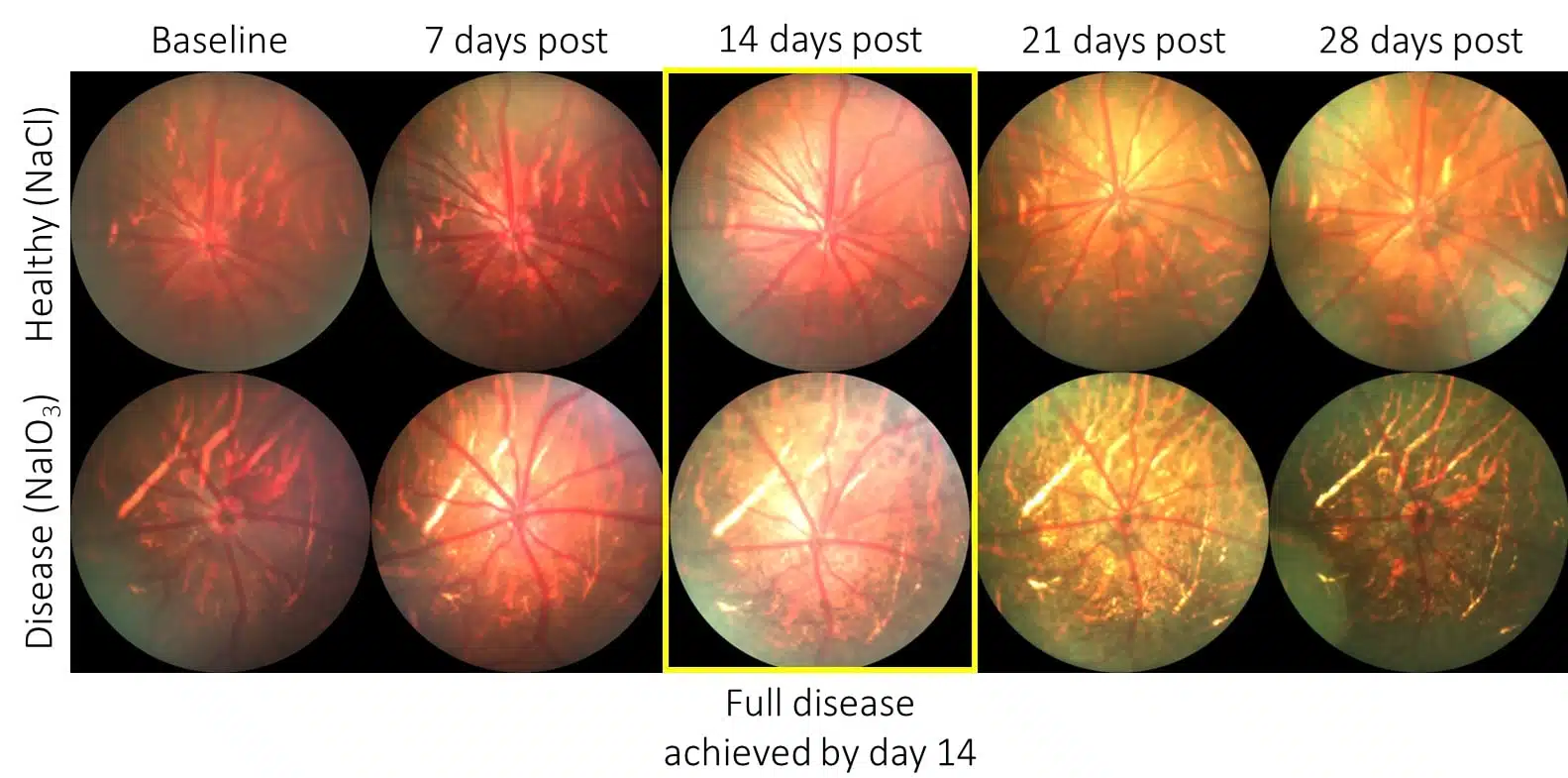
Retinal pigment epithelium and photoreceptor degeneration is common in retinal diseases like early-stage AMD and retinitis pigmentosa, which eventually lead to severe visual loss and blindness. Sodium iodate is a retinotoxin that is well understood to cause damage to the RPE by oxidative stress, resulting in a cascade of photoreceptor apoptosis.
We have validated the use of sodium iodate by tail vein injection in rats to cause full disease onset by 14 days after systemic exposure. Exams include fundoscopy (show above), which quantify the accumulation of intraretinal lesions, OCT for retinal thickness measurements, and ERG for visual function.
Fundoscopic Lesion Area Quantification
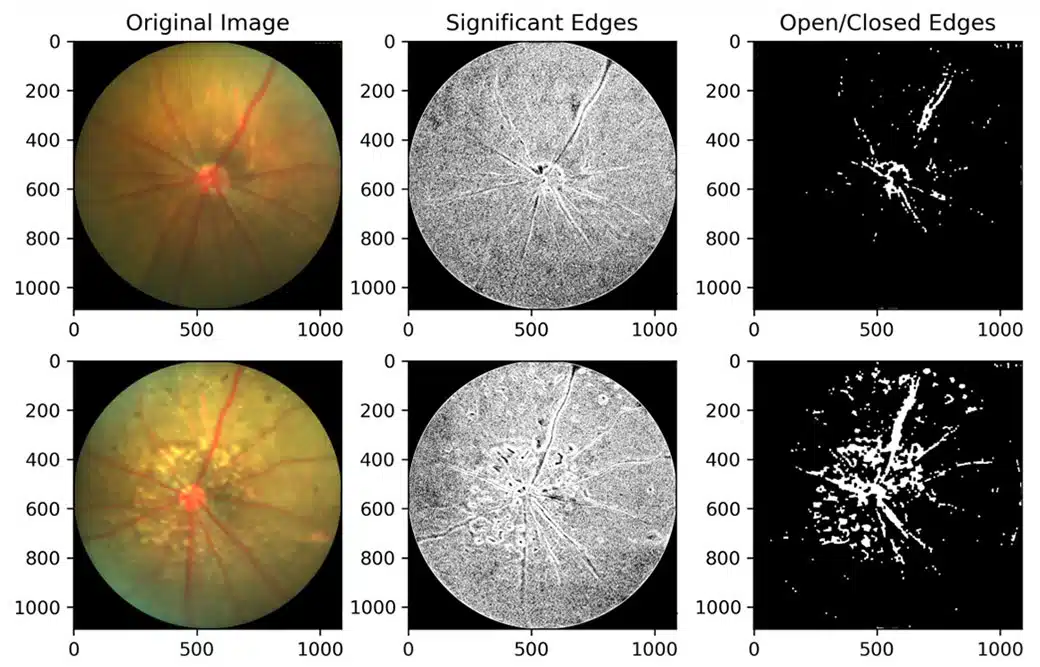
Representative Masking of Fundus Images
Fundus image lesions are masked and quantified by pixel area to enable between group comparisons.
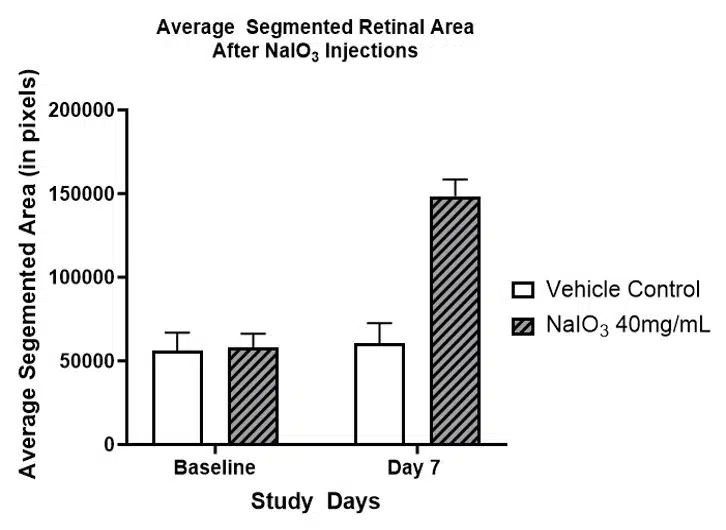
Representative Lesion Quantification
Sodium iodate induces measurable fundus lesions by day 7. These lesions can be partially attenuated with control treatments.
Structural Perturbation Characterized by OCT
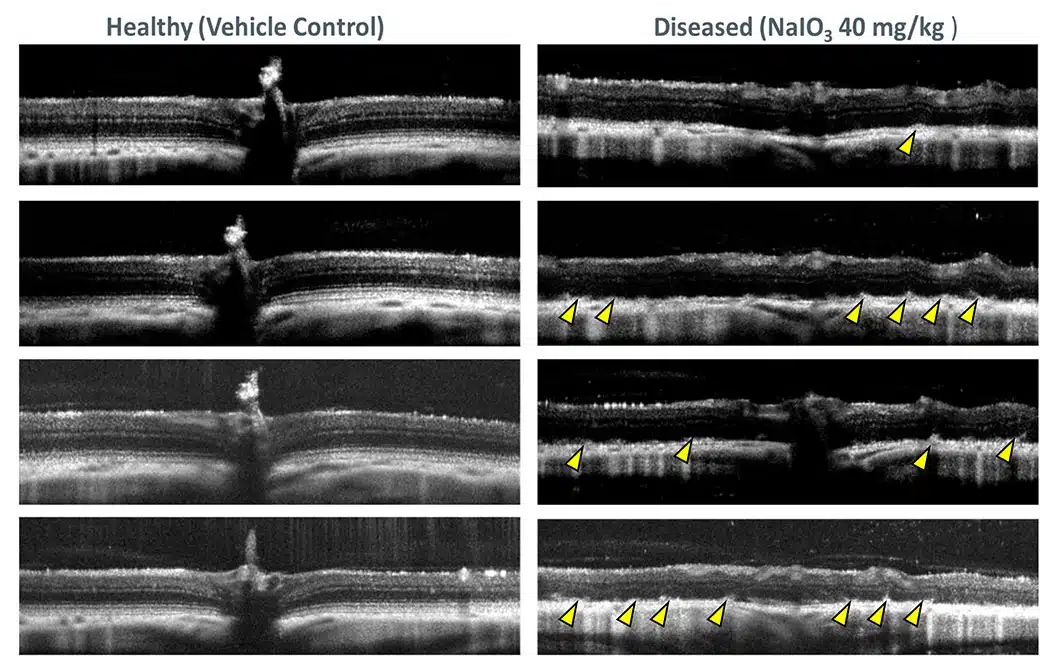
Representative OCT Scans
OCT scans show lesions and the thinning of the retinal layer occur secondary to RPE and photoreceptor loss after sodium iodate induced disease.
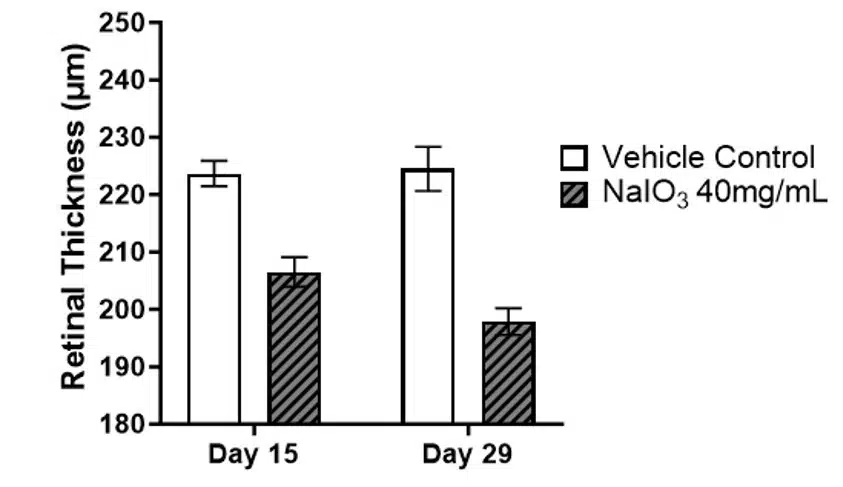
Retinal Thickness Quantification by OCT
Retinal thickness can be quantified using OCT scans to evaluate changes over time.
Histopathological Characterization

RPE Cell Degeneration
Degeneration of RPE cells is scored from H&E slides by our board certified pathologists.
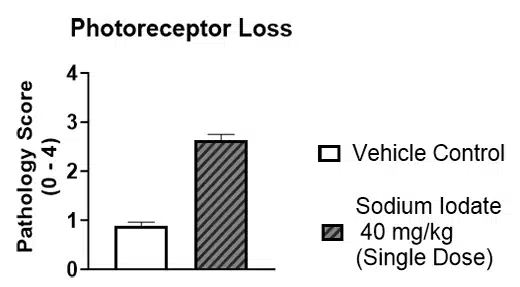
Photoreceptor Loss
Loss of photoreceptors is scored by our board certified pathologists using H&E sections.
Functional Impairment Measured by Electroretinography
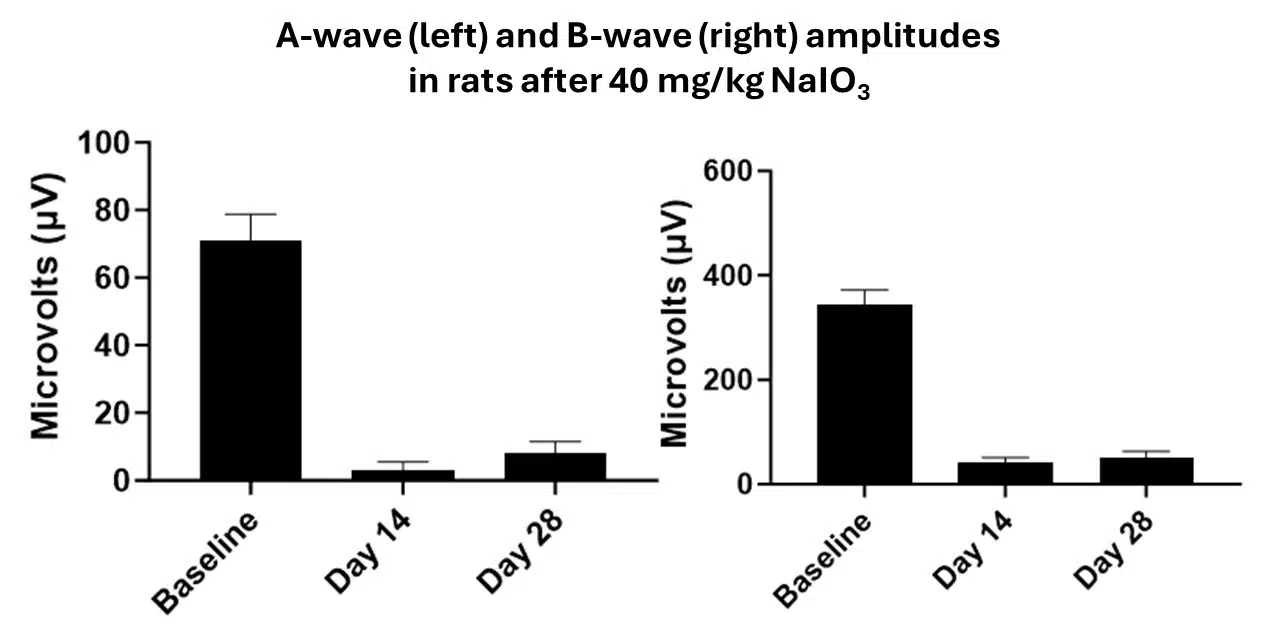
Retinal function as measured by electroretinography is severely impaired in the sodium iodate retinal disease model, providing excellent dynamic range for therapeutic read-outs. Reductions in both alpha-wave and beta-wave amplitudes are observed in all study animals.